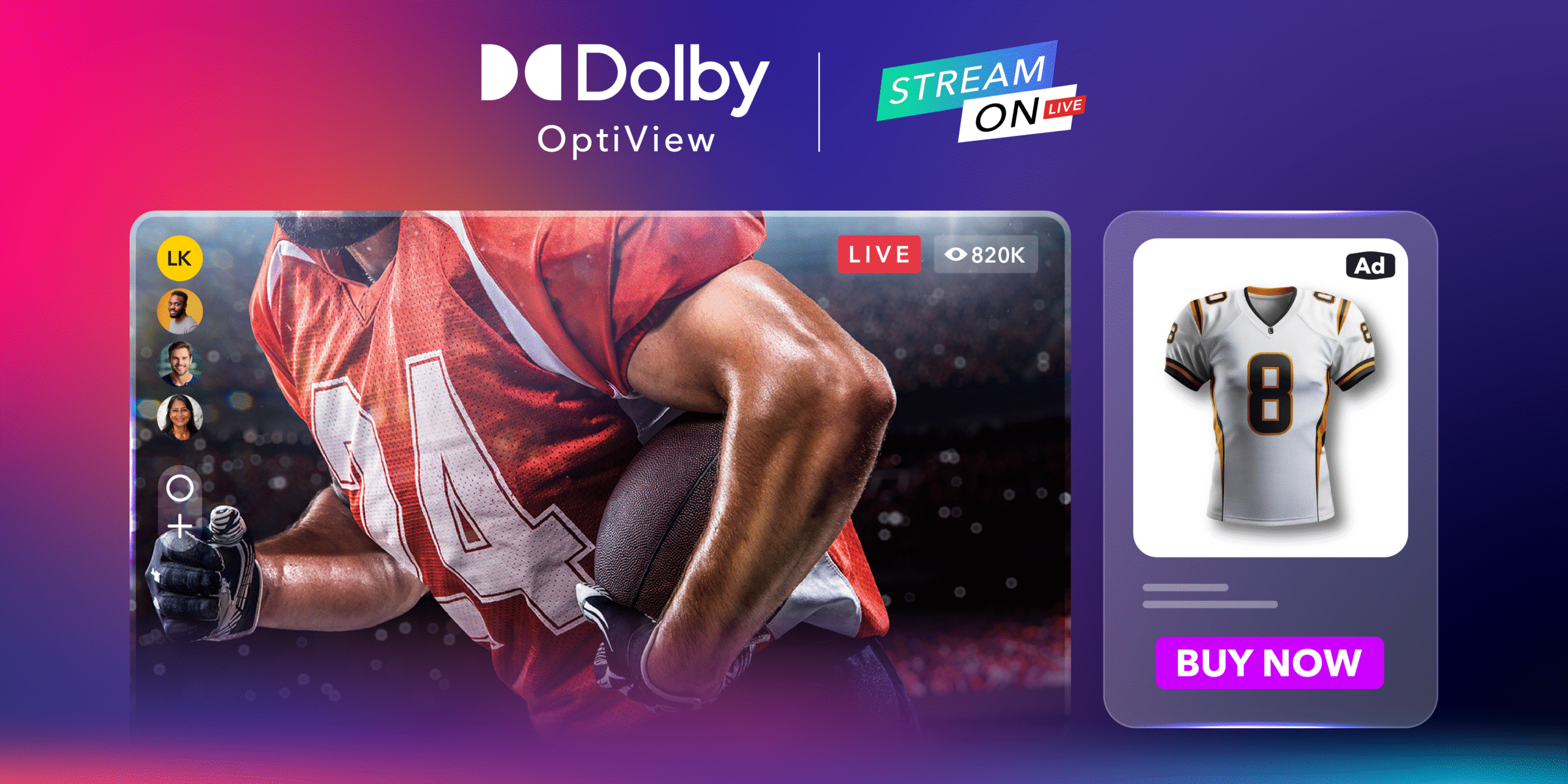Curating the right monetization strategy for your streaming content is crucial. When you choose a monetization approach that considers the nature of your content and your audience’s preferences, your earning potential skyrockets.
Many media publishers use advertising to monetize their online video content. With the growth of connected TV streaming, these publishers are wise to ensure their smart TV apps are set up with integrated ads to open doors to a valuable revenue stream.
In this article, we will cover everything related to connected TV advertising. We will discuss what it is and how to monetize your content with ads. We’ll take a special look at different ad insertion techniques.
The basics of connected TV streaming
Before we jump into the nitty-gritty of connected TV advertising, let’s take a moment to review what connected TV streaming is.
Connected television (CTV) is streaming on a smart TV, gaming console, and OTT set-top boxes. It is powered by the internet instead of cable, satellite, or other traditional media distribution methods.
It’s worth noting that streaming TV is an umbrella term that encompasses connected TV. Streaming, which is any video distribution with over-the-top (OTT) technology, is not exclusive to connected TVs. OTT streaming is also possible on other internet-connected devices, such as mobile devices, desktop browsers, and tablets.
What is CTV advertising?
Connected TV advertising is a monetization method that serves sponsored ads on streams viewed on connected TVs.
Users “pay” for your content by watching sponsored advertisements, as opposed to paying for access to the content with a cash transaction. Sponsors pay for these ads, which use the ad space to promote their brand. Typically, an ad server works as an intermediary, and broadcasters are paid a set rate per view.
CTV advertising can create an equivalent user experience to commercials on traditional television or be more actionable. For example, an ad can feature a QR code that users can scan from their phones to make a purchase or learn more.
In some live streaming instances, the player is minimized in a picture-in-picture fashion to display the advertisements alongside the player so viewers don’t miss a moment of the stream.

STV advertising vs. CTV advertising
Streaming TV (STV) advertising and CTV advertising have a lot of overlap. CTV advertising is STV advertising on a connected TV rather than a mobile device or computer.
The most significant shared component is that the ads are delivered over the internet, bringing them to life with the same technology.
Benefits of CTV advertising
The most significant benefit of connected TV advertising is that it lowers the barrier to entry for your content without sacrificing revenue. Since users don’t have to pay for access, there’s less friction for them to hit “play.”
CTV advertising has a significant advantage over commercials on traditional television. Since CTV ads are delivered over the internet, they leverage personalization technology that makes it possible to serve ads relevant to the user based on data collected from their previous online behavior.
Plus, it can be interactive since CTV is delivered over the internet. Some connected TV ads have interactive calls to action that enable users to shop for the product from another device if interested. Some CTV ads also have a “choose your adventure” format that allows viewers to choose a specific product or storyline that interests them. The goal of engaging viewers like this is to increase the chances of conversion.
How to monetize with CTV ads
Incorporating CTV ads in your streaming workflow if you’re equipped with a solid plan and the right technology. Let’s shift gears to the step-by-step process you can follow to monetize your CTV streams with ads.
1. Create a strategy
The first step to monetizing your smart TV content is creating a plan. You’ll need to determine if advertising is your entire monetization strategy or simply a piece of the puzzle.
How you incorporate advertising into your monetization strategy depends on your unique offer and your audience. Consider the value your content provides your viewers and how much they are willing (and able) to pay for it.
YouTube and Hulu are two great examples of CTV advertising strategies. Ad-supported content on YouTube is available for free to users. However, people can upgrade to a paid YouTube Premium account to stream without ads.
Hulu is a little different. It includes ad-supported plans that require users to pay a nominal subscription fee. Like YouTube, users can upgrade to a premium plan to remove ads altogether.

2. Choose an ad-insertion method
Choosing the correct ad-insertion method is one of the most critical parts of implementing a CTV advertising strategy. There are three major CTV advertising methods: Server-Side Ad Insertion (SSAI), Client-Side Ad Insertion (CSAI), and Server-Guided Ad Insertion (SGAI).
Each of these methods is different. Here’s how they compare:
| Feature or function | Client-Side Ad Insertion (CSAI) | Server-Side Ad Insertion (SSAI) | Server-Guided Ad Insertion (SGAI) |
|---|---|---|---|
| Method | Ads inserted on the client side by the player | Ads stitched into the stream by the server | Break signaling by the server; ad insertion by the player |
| Personalization and targeting | Real-time targeted and personalized advertisement | Limited personalization as advertisements are prepared and inserted ahead of the viewer | Real-time targeted and personalized advertisement |
| Insights | High control over viewer insights and personalization | Challenging to get viewer insights and personalization, requires bespoke integrations | High control over viewer insights and personalization |
| Scalability | High – no dependency on server-side component | Low – requires server processing that has to scale with peak viewers (high cost) | High – no dependency on server-side component |
| Reliability | Prone to ad-blockers, difficult to get a good experience (buffering, latency) | More seamless experience, higher resilience for ad-blockers (tracking is impacted), but higher latency and start-up | Resilient against ad-blockers and seamless experience |
| Cross-platform support | Hard to implement across platforms due to the characteristics and limitations of the platform | Fast to achieve a basic experience cross-platform (although not all platforms) | High – but dependency on a limited number of video player vendors |
| Seamless ad experiences | Low – ad media files not adapted to the stream can result in slow transitions or buffering | Medium – switching between clear and DRM-protected content could still disrupt the experience on smart TVs | High – ads have smooth transitions and can be played alongside live content without the need for disruption |
| Infrastructure cost | Low – uses the client/device | Substantial processing required in the back-end, challenging to scale, harder to operate | Low – uses mostly the client/device |
| Ad inventory | Medium – personalized ad requests need techniques like pre-bidding for higher rendering and fill rates | Medium – stitcher is unaware of the viewer’s actions (such as seeking or tuning away), so costly decision-making calls may become irrelevant | High – ad requests will only go out for breaks that will be effectively viewed. Improved rendering and fill rates |
This comparison was originally published in our guide to SGAI. For more information on the various ad-insertion techniques, check out this resource.
SGAI is the most innovative of the three methods since it leverages the strengths of SSAI and CSAI. It requires less manual effort from the broadcaster since the video player manages the flow. It is also less invasive of the user experience since it plays ads alongside live streams rather than interrupting the broadcast.
3. Build your tech stack
Building the right tech stack is crucial for bringing a connected TV advertising strategy to life. You’ll need technology to bridge the gap between an ad server and your video player, which will look different depending on your streaming setup.
An end-to-end streaming solution that serves ads natively or integrates with a partner who does is a great option if you want a tried and true workflow. However, if you have a streaming workflow that you’re happy with, simply integrating an ad-insertion tool is also an option.
Dolby OptiView offers an end-to-end streaming solution and an ads-focused solution. Contact us to learn more about how we can help you bring your CTV advertising strategy to life.

4. Go live
Once your workflow is set up, it’s time to go live with your CTV ads. How you structure your launch depends on whether you’re incorporating an ad-supported offer into your current streaming service or if you’re going live with a brand new streaming service.
If you’re launching a brand new service, you can use various marketing techniques, from launch events to tried-and-true digital marketing practices.
If you’re rolling out an ad-supported plan in addition to existing paid ad-free plans, you probably do not want to market this new option very heavily to your existing customers. That’s because you can already count on them for recurring revenue. However, you can present your ad-supported plan as an option when subscribers go through the flow to cancel their subscription.
With that said, it’s wise to target a new segment of your audience that may have been unwilling or unable to pay for your existing subscriptions.
Final thoughts
Connected TV advertising is a valuable monetization method for many broadcasters and media distributors. With this technique, you can use ads to make your content more accessible to viewers while making money.
Ready to incorporate ads in your CTV streaming workflow? Dolby OptiView’s ad insertion solution offers everything you need to implement a successful CTV advertising strategy. This technology uses Server-Guided Ad Insertion, which enables you to generate ad revenue without compromising the user experience.
Contact us today to learn more about our SGAI solution.









